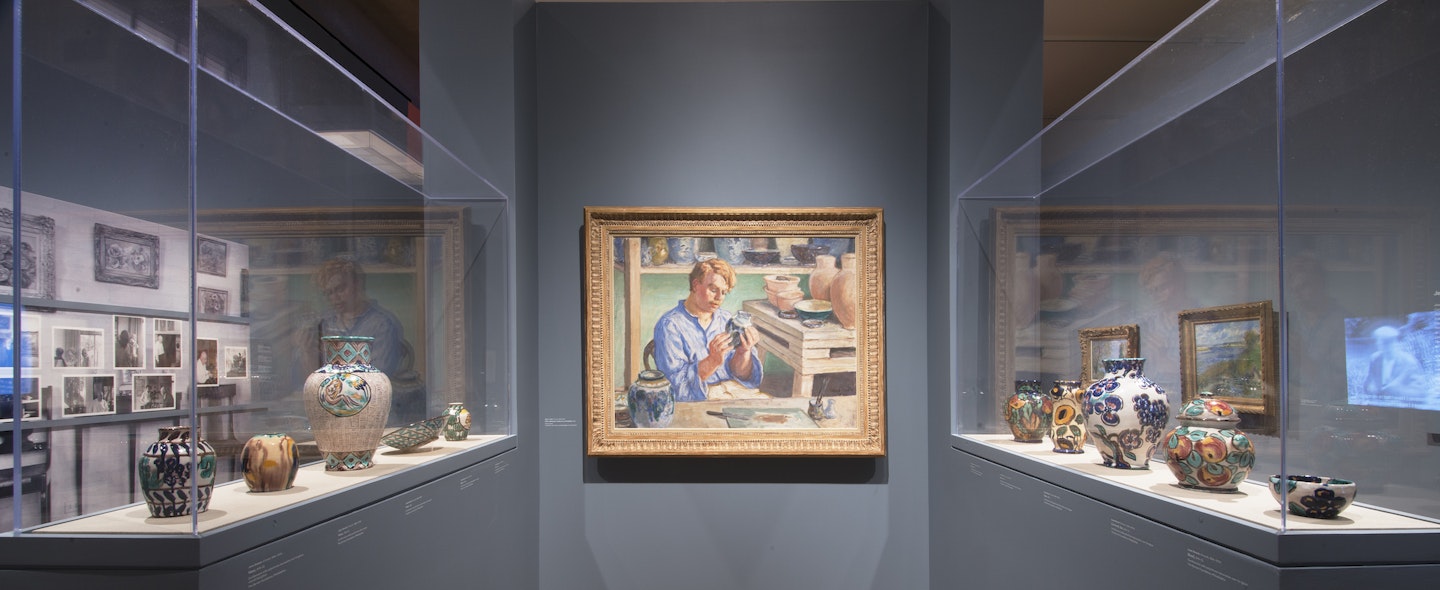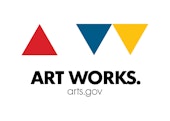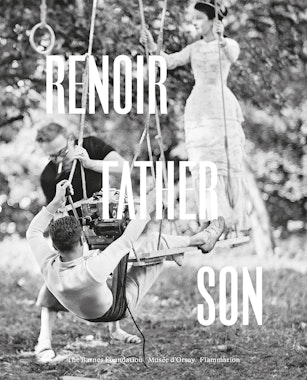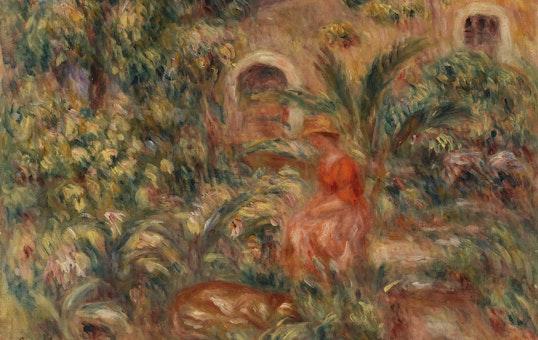
Pierre-Auguste Renoir. Landscape with Woman and Dog (detail), 1917. BF541. Public Domain.
About the Exhibition
Orson Welles described filmmaker Jean Renoir (1894–1979), son of renowned impressionist painter Pierre-Auguste Renoir, as “the greatest of all directors.” This exhibition aims to retrace chapters of Jean’s productions through the course of a rich and fascinating dialogue between father and son. If Pierre-Auguste Renoir’s artistic practice and creative universe influenced Jean’s art, Jean’s films shed light on his father’s paintings.
Focusing on core themes in Jean’s works, such as his vision and re-creation of Paris, the exhibition examines his path to becoming a prominent international filmmaker, bringing together paintings, drawings, films, costumes, and photos—as well as the ceramics he made before he turned to cinema. The Barnes, with its collection of Jean Renoir pottery in addition to 181 works by Pierre-Auguste Renoir, provides a poignant setting for exploring this complex, fruitful relationship between painting and cinema.

René Saint-Paul. Jean Renoir, in Montmartre, 1955. Photo © René Saint-Paul/Bridgeman Images
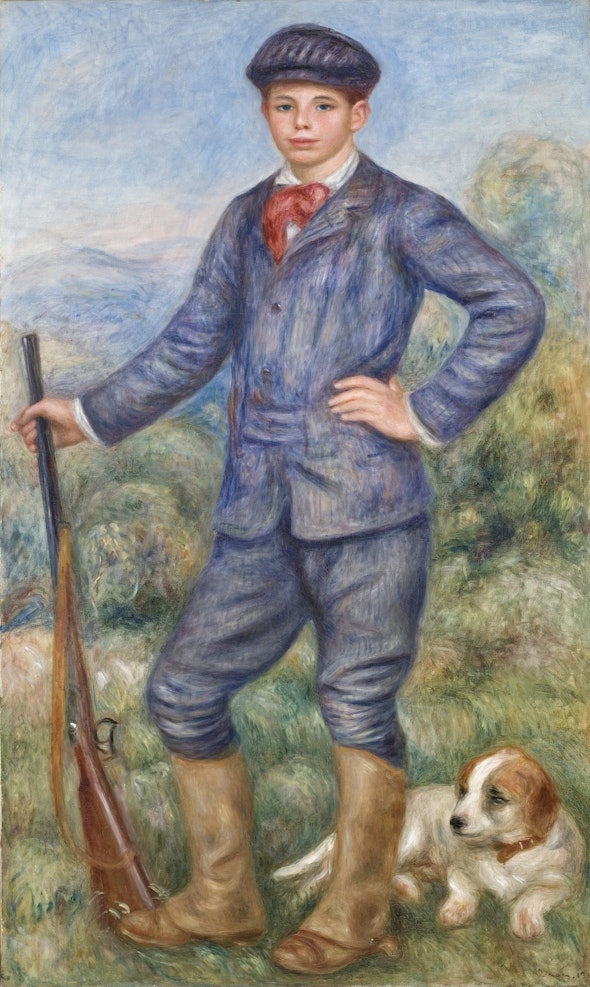
Pierre-Auguste Renoir. Jean as a Huntsman, 1910. Los Angeles County Museum of Art. Gift through the generosity of the late Mr. Jean Renoir and Madame Dido Renoir
Special Tour
Renoir: Father and Son Exhibition and Collection Tour
Start in the exhibition and then move into collection with a look at select paintings by Pierre-Auguste Renoir that further illuminate the rich and fascinating dialogue between father and son.
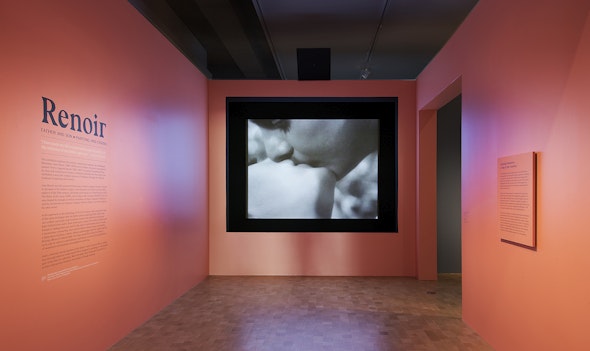
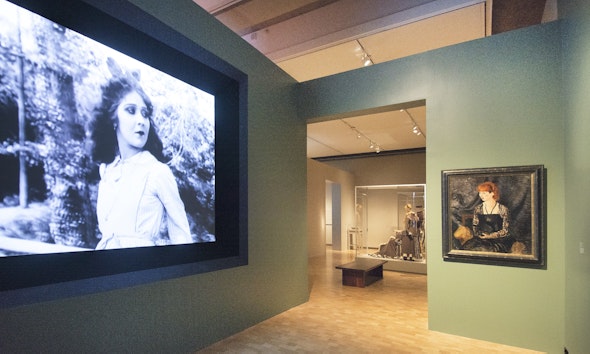
Explore Films, Paintings, and More
Father and son shared muses, motifs, palettes, and a deep sense of place. Learn more about the artistic exchange between two masters of image-making.
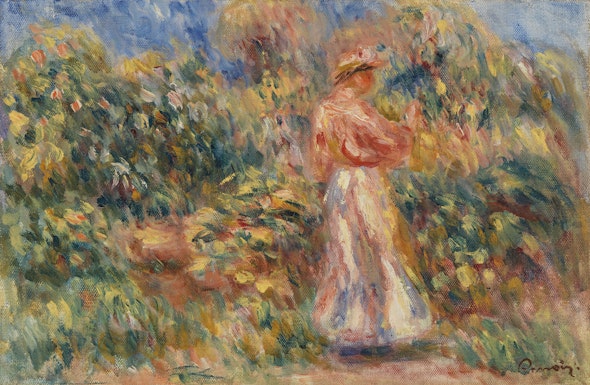
Pierre-Auguste Renoir. Landscape with Woman in Pink and White, 1916. BF922. Public Domain.
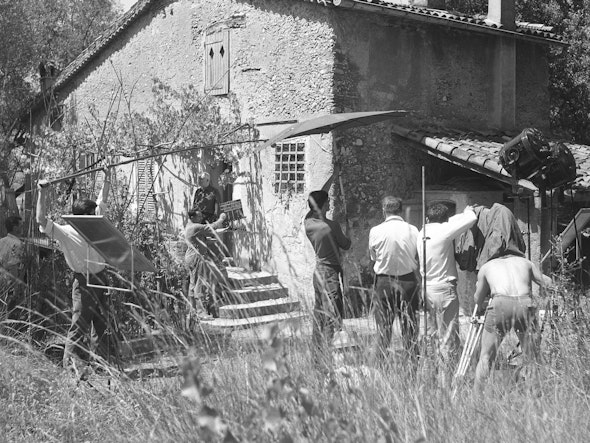
Jean Renoir on the set of Picnic on the Grass at the family's home in Les Collettes, Cagnes, 1959. INA/Photo by Gérard Landau
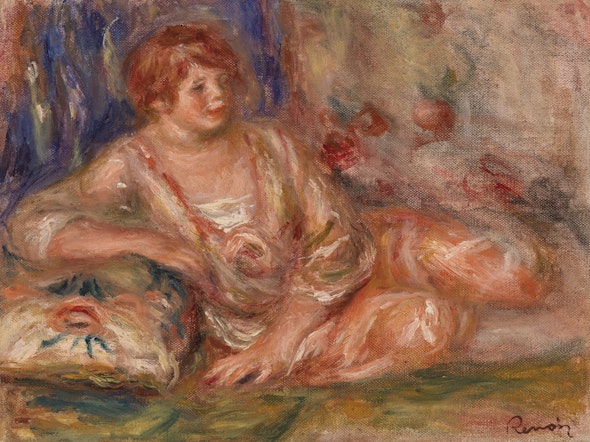
Pierre-Auguste Renoir. Andrée in Pink, Reclining, c. 1918. BF921. Public Domain.
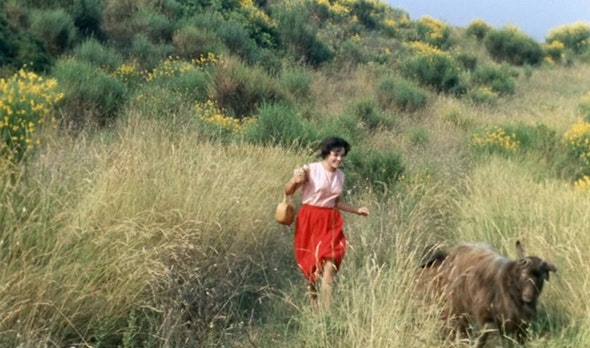
Still frame from Picnic on the Grass (1959), directed by Jean Renoir. © StudioCanal
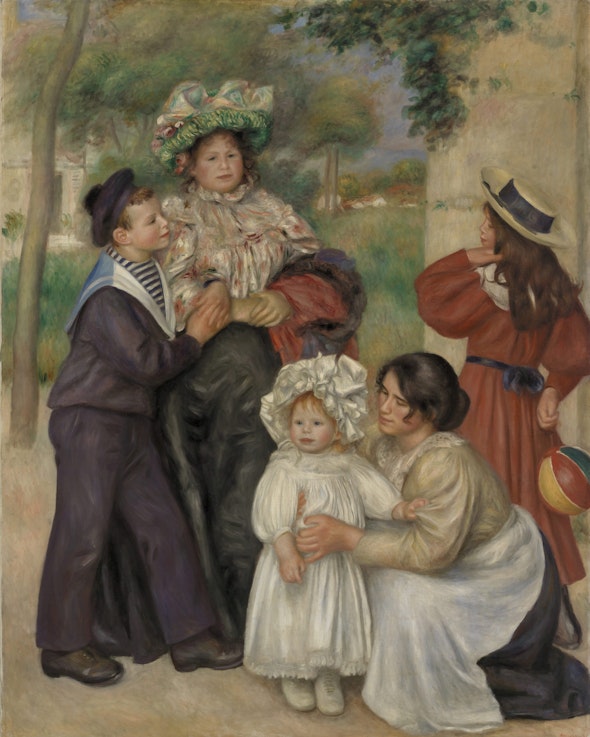
Pierre-Auguste Renoir. The Artist's Family, 1896. BF819. Public Domain.
Exhibition Organization
This exhibition is curated by Sylvie Patry, Chief Curator/Deputy Director for Curatorial Affairs and Collections at the Musée d’Orsay, Paris, and Consulting Curator at the Barnes. The exhibition is organized by the Barnes Foundation, Philadelphia, and the Musées d'Orsay et de l'Orangerie, Paris, in collaboration with La Cinémathèque française, Paris.
Select films generously provided by STUDIOCANAL.
Sponsors
Renoir: Father and Son/Painting and Cinema is sponsored by:
The exhibition is supported in part by an award from the National Endowment for the Arts.
Critical support for the exhibition program comes from contributors to the Barnes Foundation Exhibition Fund:
Julia and David Fleischner
Leigh and John Middleton
Jeanette and Joe Neubauer
Aileen and Brian Roberts
and
John Alchin and Hal Marryatt, Jill and Sheldon Bonovitz, Lois and Julian Brodsky, Laura and Bill Buck, Joan Carter and John Aglialoro, Dan and Monica DiLella, Eugene and Michelle Dubay, Lisa D. Kabnick and John H. McFadden, Marguerite and Gerry Lenfest, Victoria McNeil Le Vine, Leslie Miller and Richard Worley Foundation, Kay and Michael Park, Adele and Harold Schaeffer, Katie and Tony Schaeffer, van Beuren Charitable Foundation, Kirsten White, A. Morris Williams, Jr., Michele Plante and Robert N. Wilson, Anonymous
Additional funding from the Horace W. Goldsmith Foundation, the Jill and Sheldon Bonovitz Exhibition Fund, Dolfinger-McMahon Foundation, The Rittenhouse Hotel, and other individual donors.
Exhibition Catalogue
Renoir: Father and Son/Painting and Cinema
This exhibition catalogue delves into the relationship between Pierre-Auguste Renoir and Jean Renoir, reexamining Jean’s film career through the lens of his father’s paintings. Focusing on core themes in both artists’ works, this volume traces Jean’s path to becoming a prominent international director, bringing together paintings, drawings, films, costumes, and photos—as well as the ceramics he made before he turned to cinema. (Hardcover, 312 pages.)
